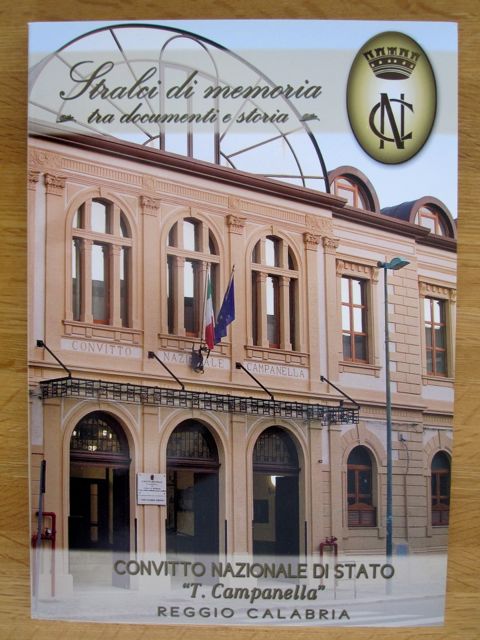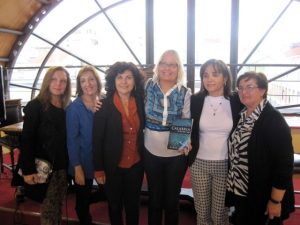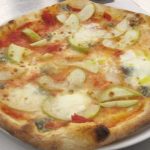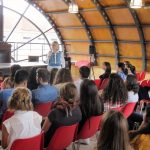THE ANGLO-ITALIAN CLUB
Calabrians have shown a lot of interest in my book, Calabria: The Other Italy. Even those who don’t speak a word of English want to know what it’s about and how they’re portrayed. The members of the Anglo-Italian Club of Reggio Calabria have taken a particular interest. Heck, the group is in the book.
I’ve given a number of presentations for its members, from holiday musings (see An American Thanksgiving in Italy) to the American school system, from Edgar Allan Poe to Georgia O’Keeffe, and even Las Vegas. Or maybe, especially Las Vegas – that topic was quite popular.
When word got out that I had written a book, they anxiously awaited its publication. I even gave two talks in anticipation of the date. One focused on my backstory and the other on the specific contents, which included the reading of short excerpts. Their fascination with my project made sense as the book put together their love for Calabria with that of the English language. I would find out that the combination went equally well with the city’s younger readers when Erminia, one of the group’s regulars, asked me to speak at her school.
LICEO CLASSICO EUROPEO, AN ITALIAN HIGH SCHOOL
The high school’s official name is Liceo Classico Europeo del Convitto “T. Campanella,” which is quite a mouthful. Flipping through the history of the school in a book given to me after the talk, I quickly realized that the institution had a past considerably longer than its name. Founded in 1564 as a Jesuit school to instruct both ecclesiastics and non, the school had a mission to instill Catholic beliefs in a period of religious uncertainty, not to mention the constant attacks perpetrated by Barbary pirates.
The institution’s history paralleled that of the city, eventually becoming secular and establishing a boarding school (thus, the “convitto” in its name). During various difficult historical periods, it hosted soldiers and hospitals, and was destroyed by earthquake and fire. The present scholastic focus emerged in 1995 with a concentration on the classics and European languages, English and French. And to complete its long name is none other than Tommaso Campanella (1568-1639), renowned philosopher, theologian, poet and Dominican friar from Stilo in the Province of Reggio Calabria.
THE AMERICAN WRITER
Walking through the institution’s hallways, which weren’t all that old relatively speaking, I met several of the school’s teachers who wanted to meet the “scrittrice americana.” It’s sort of funny to hear yourself referred to as the “American writer” in another language. You glance around to make sure that Paul Theroux or some other esteemed author isn’t standing behind you.
No, they were interested in meeting me. The modern assembly hall topped by a domed ceiling of steel and wood with large, arched windows on either end was bustling, full of students who had read a chapter of my book. I was also pleasantly surprised to be greeted by a former English student who taught Latin and Greek there. It surely is a small world.
THE STUDENTS’ QUESTIONS
After the introductions I told them how I had landed in Calabria, about my experiences and my book. They had clearly read “City Living” as the first question was where I had eaten the gorgonzola and green apple pizza. There was no doubt I was in Italy. I asked if they found the combination appealing and they did. They hadn’t heard of it before, and these youngsters had seen a lot of pizzas in their 17- or 18-odd years on earth. I had to break it to them that the pizzeria in question had closed, but let them know of the chef’s new location (see The Tavola Calda, Part 2).
While on the subject of pizza, the students noted that some of my observations surprised them, directing their attention to things they hadn’t really taken note of or considered. In reaction to a passage in “On Foot in Reggio di Calabria,” they remarked that the image of pizzerias crowded with children and young teenagers leaving much of what they had ordered uneaten on the plate in one of Italy’s poorest regions was familiar to them, but they hadn’t previously given it much thought.
Continuing with food, one young man asked if I had tasted their parmigiana, referring to eggplant parmigiana. Of course, how could I not have partaken in such a delectable dish? However, this question prompted a discussion as to the differences between parmigiana and lasagne in other parts of Italy, and then in the United States.
They bristled a bit at my statement that young people generally do not work. Not having read the entire book, there wasn’t context; however, they repeated in one voice that there weren’t any jobs. One of the teachers, an Italian-Australian who had returned to Calabria where she has now lived for more than half of her life, said that when she first arrived, she questioned this state of affairs, but after many years she personally came to the conclusion that there was really nothing for them to do.
Another delicate subject was the mafia. They hadn’t read the sections pertaining to criminality, but one female student asked if I had written about the ‘Ndrangheta. I said that I had as it was a part of the region’s story and I felt it needed to be included. She would have preferred that the subject not be in my book. The issue clearly bothered her. I told her that I was of the opinion that for a situation to improve, the problem must be openly addressed. None of the other students chimed in.
RESOURCES AND CHALLENGES
I understand the sensitivities, particularly with regard to certain topics. Calabrians and Southern Italians in general suffer under a perpetual finger pointing from the media and many a northern entity, and I empathize with their plight. Rest assured, I would never have wasted my time writing of a people and a place I didn’t care for.
Which brings me to the question of what I missed the most about Calabria. Narrowing a topic to the “most” or the “best” of anything is always a challenge for me; however, friends and food can sum up that response. And once again, the mere mention of cuisine will always leave the door open for Calabresi of any age to wax poetic about food in general or the particulars of a specific dish.
The students, in their 4th and 5th years of high school (which lasts one more year than in the states), were comfortable communicating in English. As stated in the short article in Italian about the presentation that came out in several online newspapers the next day, languages and foreign cultures hold a special importance at the school. Their region also plays a significant role, judging by the school year’s theme, “Our Land: Resources and Challenges” – a worthy topic, also for my book, Calabria: The Other Italy.
 Read more about this fascinating Southern Italian region in Calabria: The Other Italy, an award-winning, nonfiction book that explores daily life, culture, history, the arts, food, society and tourism of Calabria, Italy. Available in paperback and e-book formats.
Read more about this fascinating Southern Italian region in Calabria: The Other Italy, an award-winning, nonfiction book that explores daily life, culture, history, the arts, food, society and tourism of Calabria, Italy. Available in paperback and e-book formats.
Another visit to an Italian high school is featured in the blog post Meeting Students in Villa San Giovanni.
“Like” Calabria: The Other Italy’s Facebook page and follow me on Karen’s Instagram and Karen’s Twitter for more beautiful pictures and information.
Sign up below to receive the next blog post directly to your email for free.






Comments 2
I thoroughly enjoyed reading your book, Calabria the Other Italy.
My grandfather was from Magisano. Have you travelled there? Spent any time there? If so, I would like to know your impressions.
Linda Lostumo ( was Lostumbo before my ancestors arrived in the US) Miller.
Author
Very glad to hear you enjoyed my book. Magisano is in the Sila Mountains in the Province of Catanzaro. I haven’t ever visited, but it’s known for its Cascata delle Ninfe, a beautiful waterfall and a forest area with numerous centuries-old trees.